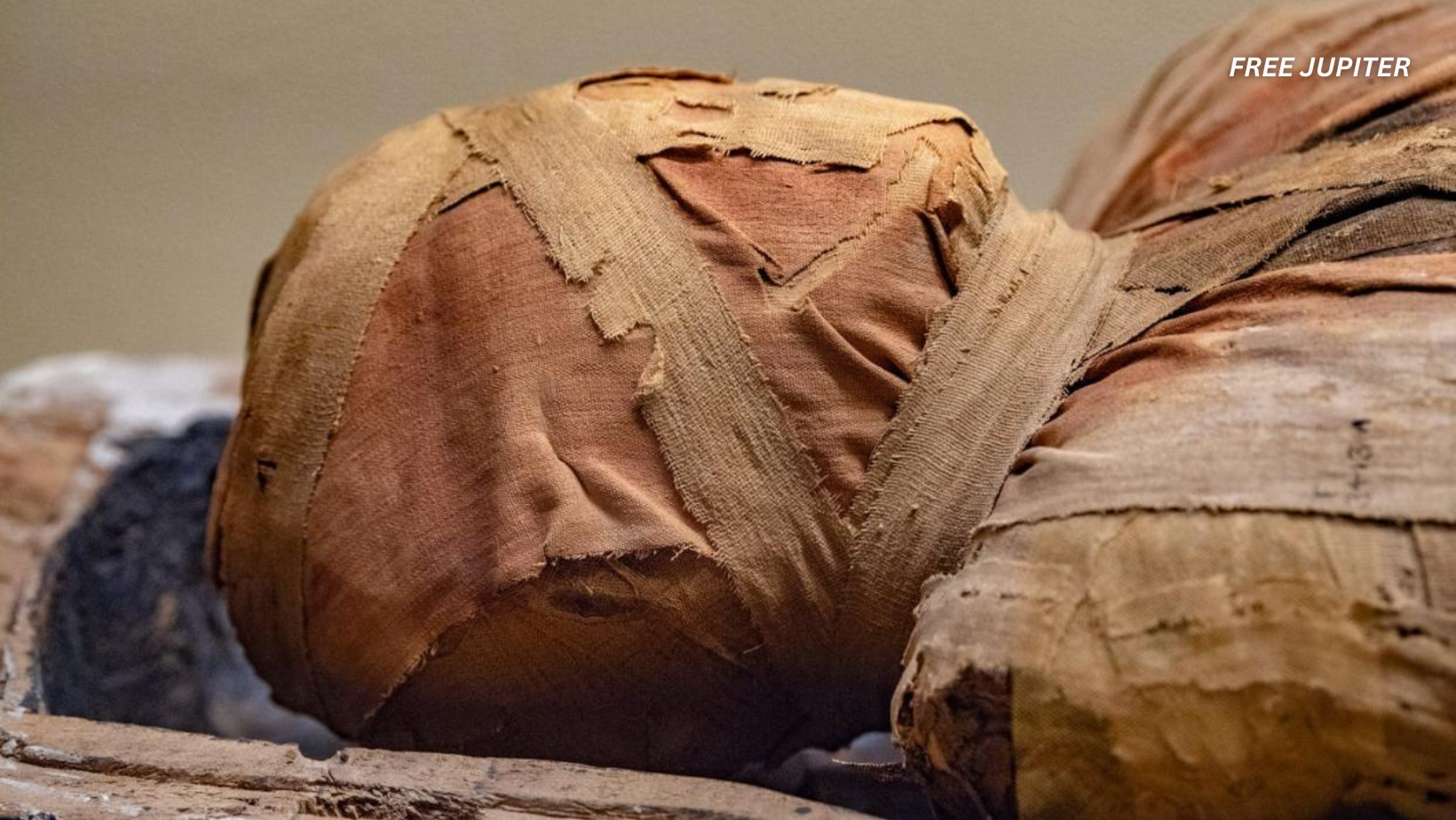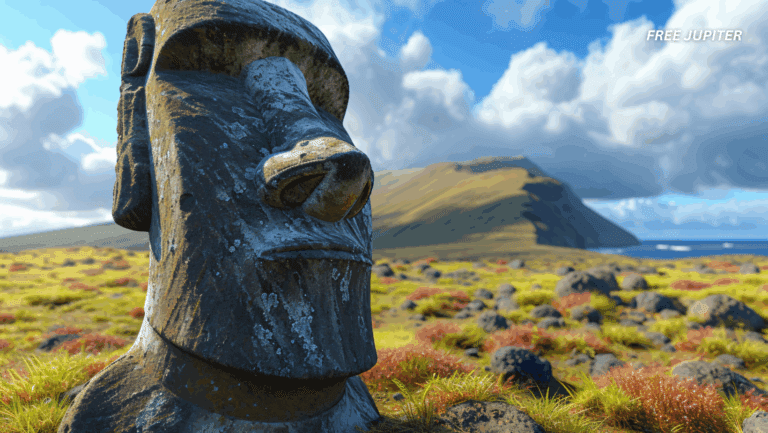The city of Naples, Italy, already steeped in centuries of history, has revealed yet another chapter from its ancient past. Archaeologists, after years of anticipation and careful planning, have finally opened a sarcophagus that had remained undisturbed for two millennia. What they discovered inside has not only astounded the scientific community but also provided a rare glimpse into the customs and craftsmanship of ancient Roman society.
A Careful Approach to an Ancient Enigma
The journey began with a delicate exploration of the Tomb of Cerberus, located in Giugliano, a region northwest of Naples. The tomb, named for its vivid frescoes depicting the mythical three-headed guardian of the Underworld, had long intrigued researchers. Using advanced micro camera technology, the team led by Dr. Simona Formola cautiously surveyed the interior before making any physical entry. Their initial findings were promising, prompting them to proceed with the opening of the sealed stone container.
Upon entering the sarcophagus, the archaeologists were greeted by a sight that defied expectations: a human body, lying face-up and shrouded, preserved in a state that could only be described as extraordinary given the passage of 2,000 years. The condition of the remains, along with the artifacts found nearby, immediately suggested that this was no ordinary burial.
The Tomb of Cerberus: More Than Just a Name
The Tomb of Cerberus itself is a marvel. Discovered in a necropolis near Naples, it stands out for its ornate wall paintings of Cerberus, the legendary hound of Hades. These artistic details not only highlight the importance of the tomb but also provide clues about the beliefs and values of those who constructed it.
Within this chamber, the sarcophagus had been sealed away, untouched by time or human interference. The decision to finally open it was not taken lightly, but the rewards have been immense.
A Glimpse at Ancient Burial Practices
Inside the sarcophagus, the body was found wrapped in a shroud that had, over centuries, become mineralized—a process likely aided by the unique climate within the burial chamber. This natural preservation has allowed researchers to study the fabric in detail, with ongoing analyses aimed at uncovering the structure, type, and craftsmanship of the yarn used. Such information could shed light on the textile traditions and economic conditions of the era.
Surrounding the body were several objects that spoke to the rituals and care involved in the burial. Among these were ointment jars, known as unguentaria, and strigils, tools used for cleaning the body. These items, commonly associated with ancient funerary customs, indicate that the deceased received meticulous preparation, possibly reflecting their status within the family or community.
Who Was the Person in the Sarcophagus?
The combination of careful burial and the richness of the accompanying goods suggests that the individual interred was likely a prominent member of the family for whom the mausoleum was constructed. This is supported by the attention to detail in both the preparation of the body and the selection of grave goods, which include items used in both daily life and ceremonial contexts.
While the identity of the person remains unknown, ongoing DNA analysis and further study of the artifacts may eventually provide more clues. The hope is that these findings will not only reveal more about the individual but also about the broader social and cultural landscape of ancient Naples.
Read more: 125-Year-Old Physics Puzzle Has Finally Been Cracked by Mathematicians
The Science of Preservation: Nature and Human Ingenuity
One of the most remarkable aspects of this discovery is the state of preservation of both the body and the shroud. Researchers believe that the mineralization of the fabric was facilitated by the specific environmental conditions within the tomb. This natural process, combined with the ancient use of preservation techniques, has resulted in a level of conservation rarely seen in burials of this age.
Laboratory analyses have already revealed that the body was treated with creams derived from plants such as Chenopodium (goosefoot) and absinthe. These substances, known for their preservative properties, were likely applied as part of the funerary rituals to help protect the body from decay. Such sophisticated use of natural resources underscores the advanced understanding of preservation held by the people of the time.
Expanding the Historical Picture
The significance of this discovery extends far beyond the sarcophagus itself. According to Marian Nuzzo, a superintendent with the Italian Ministry of Culture, the Tomb of Cerberus continues to offer valuable information about the Phlegraean region near Liternum. Each new piece of data contributes to a more nuanced understanding of the area’s past, opening doors to multidisciplinary research that spans archaeology, anthropology, and even environmental science.
Recent laboratory work on samples from the burial site has yielded a wealth of information about ancient funerary practices. These findings, which include details about the treatment of the body and the rituals performed, are enriching the broader panorama of knowledge about Roman provincial life.
The Role of Ongoing Analysis
The work is far from over. Researchers are continuing to analyze not only the remains and textiles but also organic substances such as pollen found within the sarcophagus. These studies may reveal more about the environment at the time of burial, the diet and health of the deceased, and even the specific season in which the burial took place.
Fabric analysis, in particular, is expected to provide insights into the structure and quality of the yarn, which could in turn reflect the social standing of the deceased and the resources available to their family. Meanwhile, DNA testing holds the promise of uncovering familial relationships and genetic traits that could further illuminate the story of this ancient individual.
Read more: Woman Found Living with 600-Pound ‘Mummified’ Son’s Body for 9 Months
A Broader Impact on Understanding Ancient Naples
The findings from the Tomb of Cerberus are not just of interest to specialists. They have the potential to reshape our understanding of the social and cultural life of Naples during the Roman era. By examining the burial in its broader context, archaeologists hope to piece together a more complete picture of the customs, beliefs, and daily realities of the people who lived in the region 2,000 years ago.
The Ministry of Culture is optimistic that continued research will yield even more discoveries, both within the tomb itself and in the surrounding necropolis. Each new detail adds to the tapestry of history, helping to bridge the gap between the distant past and the present.
Looking Ahead: What’s Next for the Tomb of Cerberus?
With so much still to learn, the Tomb of Cerberus will remain a focal point for research in the coming years. The ongoing analyses of fabrics, organic materials, and DNA promise to yield new insights, while further exploration of the necropolis may uncover additional burials and artifacts.
As each layer of history is carefully peeled back, the story of ancient Naples becomes ever richer and more complex. The unsealing of this 2,000-year-old sarcophagus is not just a remarkable archaeological achievement; it is a testament to the enduring fascination of the past and the endless quest to understand the lives of those who came before us.










